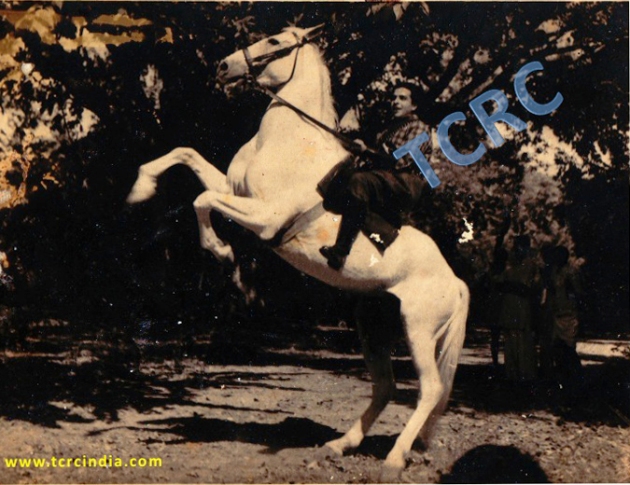By P.V. Gopalakrishnan
In the early times when classical music was by far the stronghold in cinema, the orchestras, which were mostly owned in-house by Production Houses, comprised, mostly, traditional Indian musical instruments, including Harmonium & Jalatharangam.
Listen to this song by K.B.Sundarambal from the cult classic film ‘Avvaiyar’ (1953), in which Jalatharangam features along with violins.
Another old song where the BGM, which included Harmonium is minimalistic was from the film “En Manaivi” (1942), featuring Nellore Natesam.
Some of Western & African instruments were also in used in the Tamil movies produced prior to fifties, such as Clarinets, Trumpets, Violins, Piano et al.
Here is an old hit from Vazhkai, in which you could hear Clarinet dominantly in the BGM.
In fact, till much later, Clarinet solos featured in many Tamil film hits, like the song ‘Inbam Pongum Vennila’ from Veera Pandiya Kattabomman, composed by the legend G.Ramanathan. You can hear clarinet in this song in the opening music itself after Sitar, Violins & Univox, in that order.
The Magnum Opus production, “Chandralekha” (1948) by Gemini Vasan had its soundtrack composed by S.Rajeswara Rao with R. Vaidyanathan and B. Das Gupta collaborating with M.D.Parthasarathy on the background score. In an old interview with ‘The Hindu’, Rajeswara Rao had recalled that it took him over a year to compose the music for the film, with much of the time being taken for the drum dance sequence. He stated that the music for the mammoth Drum Dance sequence they had used Trumpets, piano, many Double Bass violins and drums from Africa, Egypt, and Persia acquired from a visiting African war troupe. Cooling Rajiah played the Accordion & Piano in the gypsy song in the same film.

A still of Ranjan from the Film Chandralekha directed by S.S. Vasan.
PC: From the Archives of TCRC
In the Post Independence era, the Tamil movies started seeing changes in terms of story subjects, the way dialogues were delivered & even the music compositions, in tune with the overall metamorphosis that was witness to the change of air, all around.
The music directors were ever ready to bring in new music instruments into film music.
Though Tamil Cinema, despite being the big brother of other Southern Regional Filmmakers, traditionally followed trends in Hindi film industry.
The sensational Rajkapoor film ‘Awara” (1951) had Musical notes that was thought to be Accordion notes, which distinguished the song “Awara Hoon” by Music Directors Shankar-Jaikishen duo, inspired by an old Turkish tune.
However, there is a theory that the notes were, in fact, not Accordion at all but was played on Harmonium by one Vistasp Balsara, who passed away in 2005. He claimed, in an interview to Calcutta Doordarshan, to have played such Harmonium pieces also in other classics such as “Yaad Kiya Dil Ne” (Patita, 1953) and “Aye Mere Dil Kahin Aur Chal” (Daag, 1952).
But Accordion has come to stay by then as an important cine instrument in Hindi. Here is another breezy number from another Rajkapoor starrer, ‘Dastan’, where notable Accordion notes by the player Goody Servai decorate the song composed by Naushad.
There were other noted Accordionists in Hindi Film Industry such as Kersi Lord (Roop tera mastana in Aradhana), Sumit Mitra (Har Dil jo pyar karega in Sangam) Enoch Daniels (Beqrar karke hame from Bess saal Baad). Of these we have to specially mention about Late Kersi Lord, who was a multi instrumentalist & who immortalized some of the Hindi film hits with his contribution. He was honoured with Dadasaheb Phalke Award in 2010, as a cine musician. He was the one who played the bells like sounding ‘Glockenspiel’ instrument in the famed song ‘Main Zindagi Ka Sath Nibhata Chala Gaya’ composed by Jayadev in ‘Hum Dono’.
The accordion thus became an oft-used instrument in Hindi cinema under legendary Music directors such as C Ramchandra, Naushad, Shankar-Jaikishan, Salil Chowdhury and S D Burman as they made it a part of their compositions.
It was in Pava Mannippu (1961) that MSV-TKR featured Accordion in ‘Athan….En athan’ composition & the Accordionist was our own Mangalamurthy.
Accordionist Mangalamurthy was this writer’s craft teacher in the high school, in the late fifties, but owing to his parallel music career he was hardly seen in the school and was on long leave.
MSV had used Accordionist Mangalamurthy in many of his compositions. Some of the songs where Accordion has predominantly featured are “Avalukkenna” (server Sundaram), “Ulagam piranthathu enakkaga” (Paasam), ‘Kannirandum mella mella’ (Andavan Kattalai), Ponaal pogattum poda (Palum Pazhamum), “Netryvarai nee yaro” (Vazhkkai Padagu), “Unga ponnana kaigal” (Kathalikka Neramillai), “Poranthalum ambilaiyaa” (Policekaran Magal), “Kan pona pokkile” (Panam Padaithavan), “Iyarkkai ennum ilaiya kanni” (Shanthi Nilayam), “Varavu ettana” (Bhama Vijayam), “Naalai intha neram parthu” (Uyarntha Manithan).
In the following video of Avalukenna song, Mangalamurthy features himself playing accordion, along with his other legendary co musicians, such as Philip (Guitarist) & Raju (Mandolin/Santoor/ Yodelling).
The accordion’s origin is said to be from Berlin & this heavy instrument, worn on the player’s chest, weighs about 7 kgs.
A R Rahman gave Accordion a home coming again & his accordion could be heard throughout the film Guru & even in his Tamil composition ‘Nenjukkulle’ from the film ‘Kadal’.
https://soundcloud.com/aruin/kadal-bgm-nenjukkule-accordion
We will talk about some more veteran cine musicians from old Tamil Films & their exotic instruments in our upcoming articles.



